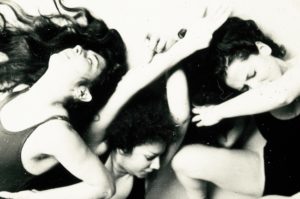Archives, Performance, and Resistance in Uruguayan Art Under Dictatorship
by Andrea Giunta
The essay begins:
Between October and November of 1983, the installation Sal-si-puedes (Exit if you can) by artist Nelbia Romero, was shown at the Galería del Notariado in Montevideo. At one point in the pathway through the gallery space, broken mannequins lay splattered in red paint. This image visually replicated what everyday reality condensed into a complex amalgam of experiences that had slowly been accumulating from the time of the coup d’état on June 27, 1973, and throughout the years of the Uruguayan civil-military dictatorship from then until 1985. This coup was no spectacular, sudden, and violent experience like the one a few months later in Chile, with the bombing of the Moneda Palace, soccer stadiums filled with prisoners, and the detentions and urban murders. In the Uruguayan case it was a pact or form of defection of the democratic powers that resulted in the establishment of a military system whose repressive forms were consolidated through the prison system, torture, death, disappearances, censorship, and exile; mechanisms that gradually accumulated and increased.

Carlos Etchegoyen, performance photograph projected in Sal-si-puedes
Romero’s Sal-si-puedes made reference to Salsipuedes, the historical name of the encounter that took place in 1831 between the then recently established military forces of the Oriental Republic of Uruguay and the indigenous groups of the area. The name Sal-si-puedes does the work of literalizing the idea of entrapment and confinement that resulted in the massacre that in turn consolidated the extermination of indigenous people in Uruguay. Romero’s installation consisted of a series of expressions in several different media. Various objects were organized in a walkthrough; a musical score was composed especially for the piece; photographs of a dance performance about the different episodes of the violent encounter were used as the basis for a projection of slides inside the installation; and a small folder of quotes from historical documents was made available to installation viewers. Along with its complex materiality, which required the spectator to reconstruct meaning from a diversity of sonic, visual, and written archives, as well as from an experience of her own body, the theme of the installation—as well as the moment in which it was created—is relevant. Sal-si-puedes took up a violent episode that was constitutive of the state’s formation, actualized under the conditions of censorship and violence imposed by the dictatorship.
The installation combined a series of social, political, and aesthetic plots. On the one hand, it proposed a reading of a past massacre in a contemporary repressive context. On the other hand, it aimed to stage the subjectivities conditioned by the climate of censorship through a complex, interdisciplinary web. The reception and interpretation of the piece must therefore be understood in the repressive context of the dictatorship. Testimonies from Romero’s contemporaries evidence a use of opaque and complicit codes, means of expression that remain inconspicuous to the castrating gaze of the dictatorship and allow us to imagine microsocieties of meaning and dialogue from which reading communities were formed. I think of these collectives as part of the intellectual and artistic networks that sought to articulate dissident messages and activities in relation to repressive state control during the years of the dictatorship. In addition to these networks and messages, in this essay, I’m also interested in addressing the historicist effect of Romero’s installation, into which archival documents were incorporated as a way of bringing unresolved aspects of the past into the present. In no way, of course, do I intend to resolve them, but I aim, precisely, to point out their latency and unrest. Taken together, the disparate parts of Sal-si-puedes is a package of experiences that appeals at the same time to the body and to the different senses with which the documents of the past are interwoven in contemporary thought and experience. Continue reading …
This essay analyzes the 1983 installation Sal-si-puedes by Uruguayan artist Nelbia Romero, and its status as an act of resistance, in light of the dictatorship then in power in her country.
 ANDREA GIUNTA is an art historian, curator, and writer specializing in Latin American art and modern and contemporary art from the post-WWII era to the present. She received her PhD from the University of Buenos Aires, Argentina, where she is currently Professor of Latin American Art. She is Principal Researcher at the National Scientific and Technical Research Council.
ANDREA GIUNTA is an art historian, curator, and writer specializing in Latin American art and modern and contemporary art from the post-WWII era to the present. She received her PhD from the University of Buenos Aires, Argentina, where she is currently Professor of Latin American Art. She is Principal Researcher at the National Scientific and Technical Research Council.
